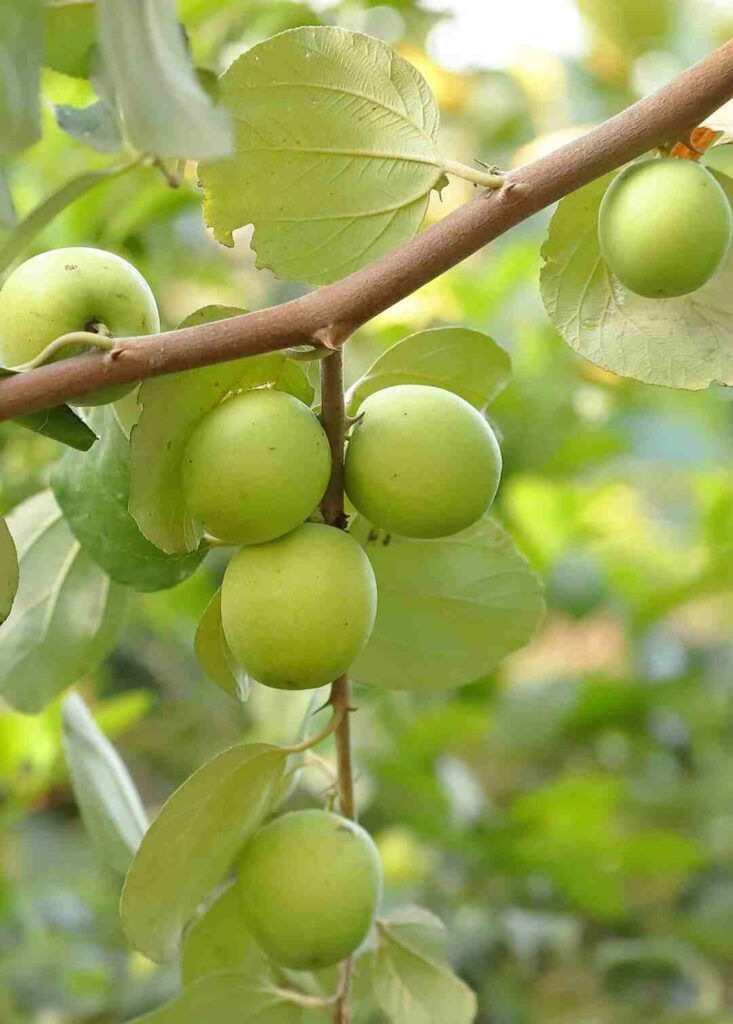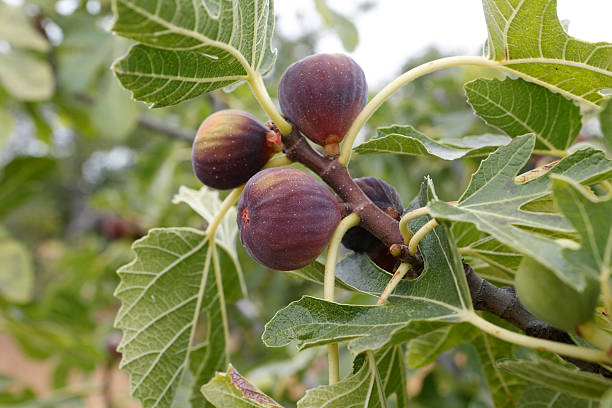Jujube Tree
Jujube (Ziziphus mauritiana)
The Jujube, also known as Ziziphus mauritiana, is a tree that has earned its place in the annals of history and tradition as the “tree of life.” Native to the Indian subcontinent and parts of Southeast Asia, this resilient, hardy tree has provided sustenance and medicinal benefits to generations of people across these regions. Often referred to as Boroi or Indian Jujube, the tree’s significance is immense, not only due to its edible fruit but also because of the various uses of its bark, leaves, and wood.
The Jujube tree is renowned for its ability to thrive in hot and dry climates, making it a symbol of endurance and self-sufficiency. Unlike many other fruit-bearing trees, the Jujube is well-suited to arid regions where water is scarce, and soil quality may not be ideal. This remarkable tree can be found in various parts of the world, including India, Pakistan, Africa, the Middle East, and even tropical regions of Australia.
Appearance and Growth of the Jujube Tree
The Ziziphus mauritiana typically grows as a small to medium-sized deciduous tree that can reach heights of 10 to 12 meters (about 30 to 40 feet). Its trunk is usually slender and covered with smooth bark that is light grayish in color. The tree’s leaves are small, ovate, and dark green, arranged alternately along the branches. In the warmer months, the tree blooms with tiny, yellow-green flowers, which, though small and inconspicuous, eventually give rise to the tree’s most valued feature: the Jujube fruit.
The Jujube tree’s fruit is small, round, and typically green when unripe, turning reddish-brown as it matures. The texture of the fruit is crisp and firm when fresh, resembling an apple in its early stages. As the fruit ripens, it becomes soft, wrinkled, and sweet, resembling a date in its dried form. The flavor of the fruit varies slightly depending on the variety, but it is often described as a blend of apple, pear, and date. When fresh, it is typically enjoyed as a refreshing snack, while dried Jujubes are commonly consumed as a sweet treat or used in culinary preparations.

Resilience and Sustainability
One of the most remarkable characteristics of the Jujube tree is its resilience. It is highly adaptable to different soil types, including poor, rocky, and sandy soils, and can withstand long periods of drought. This makes the tree a vital source of sustenance in arid and semi-arid regions, where other crops may fail to thrive. Additionally, the Jujube tree’s deep, extensive root system helps prevent soil erosion, a critical feature in desertification-prone areas. Its ability to grow in harsh conditions has earned it the nickname “tree of life,” as it provides both nourishment and protection in environments that would otherwise be inhospitable to many plant species.
The Jujube is also a low-maintenance tree, requiring minimal water and care once established. This makes it an ideal crop for farmers in regions where water resources are scarce. Due to its hardy nature, the tree can be cultivated in a variety of climates, from subtropical to tropical zones, making it a globally recognized species with the potential to benefit many communities worldwide.
Economic and Nutritional Importance
Beyond its hardiness, the Jujube tree offers significant nutritional and economic value. The fruit is highly nutritious, rich in vitamin C, antioxidants, and dietary fiber. It is a great source of natural sugars, making it an excellent energy-boosting fruit. The fruit’s high fiber content aids digestion and helps maintain gut health. The antioxidants present in Jujubes, such as flavonoids and saponins, have been linked to various health benefits, including boosting immunity, fighting inflammation, and promoting heart health. Traditional medicine has also recognized the Jujube as a remedy for several ailments, including insomnia, digestive issues, and skin conditions.
In addition to its health benefits, the Jujube fruit is highly valued in the agricultural and food industries. It is widely consumed fresh, dried, or processed into syrups, jams, and preserves. The dried fruit is especially popular in Asian cuisine and is used in a variety of sweet and savory dishes. In some cultures, the fruit is fermented to produce alcoholic beverages, while its seeds are ground into powder and used in herbal supplements.
Economically, the Jujube tree provides income for farmers and local communities. The fruit is often sold in local markets, and in some regions, Jujubes are exported globally. The tree itself, due to its valuable wood and other byproducts, can be a source of income for those who harvest and process these materials. The bark, leaves, and wood of the tree are utilized for their medicinal and practical purposes. The leaves, for example, are often used in herbal remedies and have been found to have antibacterial and antifungal properties.
Medicinal and Cultural Significance
The medicinal properties of the Jujube tree are deeply ingrained in many traditional healing practices. In Ayurveda, the traditional Indian system of medicine, Jujube is used to treat a variety of ailments, including digestive problems, respiratory issues, and anxiety. The fruit is believed to possess adaptogenic properties, which help the body adapt to stress and improve overall vitality. It is often used in combination with other herbs to create tonics, which are thought to rejuvenate the body and promote longevity.
In Chinese medicine, Jujube is highly regarded for its ability to balance the body’s energies and improve overall health. It is used to treat conditions like weakness, fatigue, and insomnia, and is often consumed as part of herbal teas or decoctions. The fruit is believed to have a calming effect on the nervous system, making it a popular remedy for stress and anxiety.
The Jujube tree also holds cultural significance in many regions. In some communities, the tree is planted near homes or in gardens as a symbol of prosperity and longevity. It is believed that the tree’s resilience and ability to produce fruit in challenging conditions represent the strength and vitality of the family or community it serves. In certain places, festivals and celebrations are dedicated to the harvest of Jujube fruit, highlighting its importance as both a food source and a symbol of abundance.
Environmental Contributions
The Jujube tree plays a crucial role in maintaining ecological balance in the regions where it grows. Its dense foliage provides shade, helping to cool the environment and reduce the effects of heat stress on surrounding plants and animals. The tree’s deep roots also contribute to water conservation by preventing water runoff and enhancing soil retention. These environmental benefits make the Jujube tree an important part of sustainable agricultural practices and ecosystem restoration projects.
In addition, the Jujube tree’s fruit provides food for various animals, including birds and small mammals. Its flowers attract pollinators, further promoting biodiversity in the areas where it grows. The tree’s ability to thrive in less-than-ideal conditions makes it a vital component of agroforestry systems, where it can be used to combat desertification and promote soil fertility.
Conclusion
The Jujube tree, or Ziziphus mauritiana, is a true “tree of life.” Its remarkable resilience, nutritional value, and diverse uses make it an invaluable resource for communities around the world. Whether it’s providing nourishment, offering medicinal benefits, or contributing to sustainable agriculture, the Jujube tree has earned its reputation as a symbol of endurance and vitality. As global challenges like climate change and water scarcity continue to threaten food security, the Jujube may become an even more important tree for the future, offering a solution to many of the world’s pressing environmental and health concerns.







